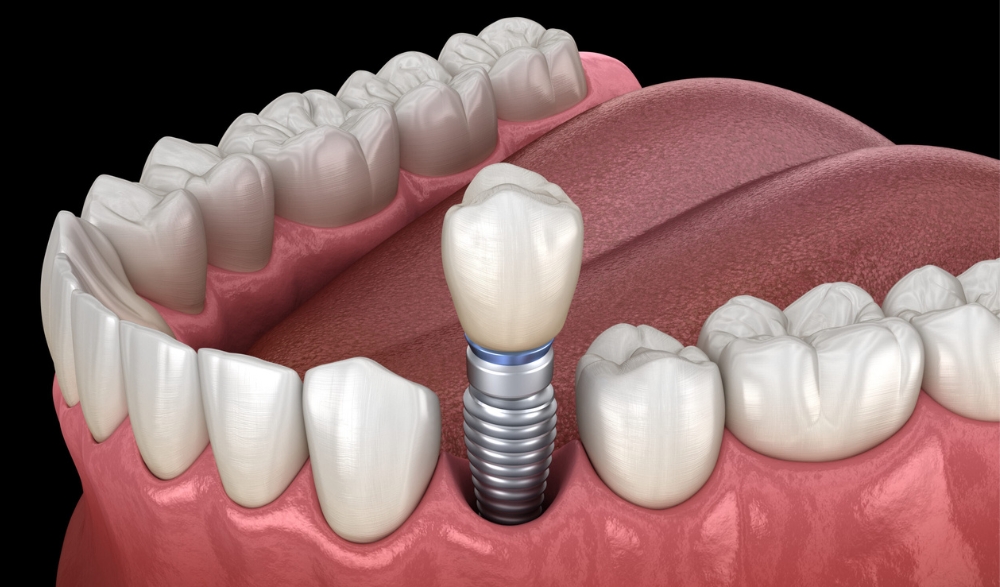Call Us Today 817-737-7668

A root canal is a common dental procedure designed to save a damaged or infected tooth. When successful, it relieves pain and restores tooth function. However, in some cases, the root canal doesn’t work as expected. If the infection persists or complications arise, it can lead to further discomfort and potential tooth loss. Understanding the causes of root canal failure and the best treatment options available can help patients make informed decisions about their dental care.
Causes of Root Canal Failure
Several factors can contribute to the failure of a root canal. Some of the most common include:
- Incomplete Cleaning: If the canals were not thoroughly cleaned during the procedure, bacteria can survive and cause reinfection.
- Cracked Tooth: If the tooth develops a crack after the root canal, bacteria can enter and infect the tooth again.
- Delayed Treatment: A long delay before receiving the root canal treatment can cause further damage to the tooth, leading to treatment failure.
- Reinfection: Even after successful treatment, reinfection may occur due to bacteria in the root or crown.
Symptoms Indicating Root Canal Failure
Recognizing signs of a failed root canal is crucial to seeking prompt treatment. These symptoms may include:
- Persistent pain or discomfort around the treated tooth.
- Swelling or tenderness in the gums.
- Increased sensitivity to hot or cold temperatures.
- A bad taste or odor in the mouth.
- Noticeable changes in the color of the tooth.
Best Treatments for Root Canal Failure
Additional treatment is necessary to restore the tooth’s health when a root canal fails. Here are the most effective options:
- Endodontic Retreatment
- What It Involves: The dentist reopens the tooth, cleans out the old filling, and removes any remaining bacteria. The new filling material is added, and the tooth is resealed.
- When It’s Used: Endodontic retreatment is often the first choice if the failure is due to an incomplete cleaning or the infection was not adequately resolved.
- Success Rate: Studies show that retreatment has a 70-90% success rate.
- Apicoectomy (Surgical Root Canal)
- What It Involves: This surgery involves removing the infected tissue at the tip of the tooth root and sealing the area. It may be required if the infection persists after retreatment or if the tooth has structural issues.
- When It’s Used: Apicoectomy is often recommended when a tooth cannot be retreated through conventional methods.
- Success Rate: Apicoectomy has a high success rate of about 85-90%.
- Tooth Extraction
- What It Involves: Extraction may be necessary if the tooth cannot be saved. After removal, the space left by the tooth can be filled with an implant, bridge, or denture.
- When It’s Used: Extraction is typically the last resort when all other treatments fail or the tooth is too damaged to repair.
- Impact on Oral Health: Extracting a tooth can impact chewing function, bite alignment, and the overall aesthetic appearance. Replacing the tooth with an implant or other prosthetic is often the next step.
The Role of a Dental Implant After Extraction
A dental implant is often recommended as the most effective long-term solution if a root canal fails and the tooth is extracted. Here’s why:
- Durability: Implants are designed to last a lifetime when properly cared for.
- Functionality: Implants restore full function, allowing you to chew, speak, and smile confidently.
- Aesthetics: Implants look and feel like natural teeth, improving overall appearance.
Preventing Root Canal Failure
While not all root canals can be 100% foolproof, certain precautions can help minimize the risk of failure:
- Follow-up Appointments: Regular checkups are essential to monitor healing and address potential issues early.
- Proper Oral Hygiene: Proper oral hygiene can prevent infections and other complications contributing to root canal failure.
- Avoiding Bite Issues: Sometimes, a failed root canal may be linked to bite problems or tooth grinding. Wearing a nightguard can protect the tooth from additional damage.
Choosing the Right Treatment Option
Selecting the best treatment for a failed root canal depends on several factors:
- Severity of the Damage: The extent of infection or damage to the tooth influences the decision between retreatment, surgery, or extraction.
- Patient Health: A patient’s overall health, including any chronic conditions, may affect the success of certain treatments.
- Financial Considerations: While endodontic retreatment and apicoectomy can be cost-effective, implants and extractions may require a more considerable investment.
A failed root canal can be a frustrating experience, but modern dentistry offers a range of effective treatments to restore your dental health. Whether through retreatment, surgery, or extraction followed by an implant, there are solutions available. For best results, consult with a trusted endodontist in Forney who specializes in these procedures. If you’re experiencing pain or suspect your root canal may have failed, don’t wait—seek professional advice today.





